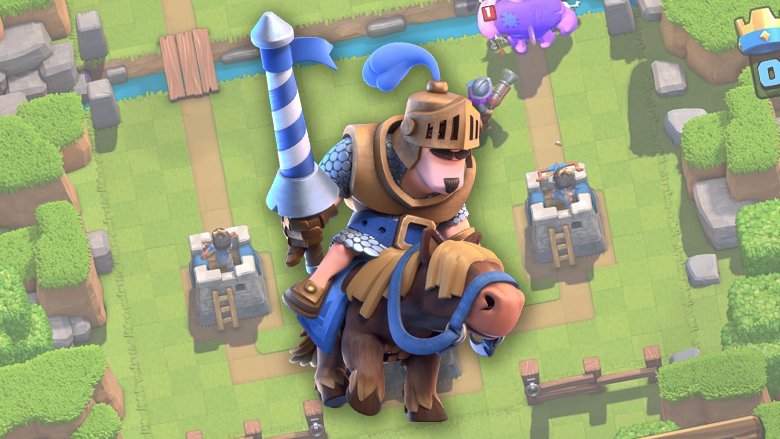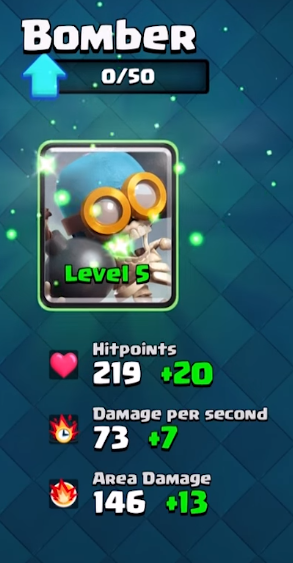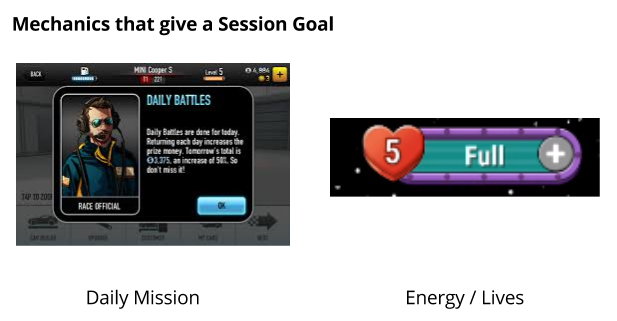What is the secret of the success of Clash Royale, the new Supercell game, — I tried to find out in my article Adam Telfer from Wooga. Dmitry Krasavin translated the material and shared it with us.

Supercell has blown up the mobile gaming market. Their new game, Clash Royale, was released in the soft launch as soon as 2016 started. They have launched the game so far only in 9 countries, but it is already clear that this is a success. Clash Royale earned almost four times more than Boom Beach in the soft launch for the same period of 26 days (source: AppAnnie Revenue Estimates in Canada). And Supercell has already committed to launch the game to the world in March.
Clash Royale is already in the top three in terms of revenue in Canada
Supercell has made a number of competent decisions in relation to Clash Royale. So they got an interesting competitive innovative game that demonstrated how a modern free-to-play design should look like. Earlier I talked about how difficult it is to properly configure and balance multiplayer for mobile, and Supercell in this case abandoned the existing rules altogether. The developers have proven that synchronous multiplayer works on mobile. Many even say that this is the first successful MOBA for mobile devices.
But stop praising the game, today I would like to talk about my favorite topic in mobile game design: sessions. What Clash Royale has particularly excelled at, in my opinion, is the design of sessions that make the player come back every day.
Two systems contributed to this:
- Free Chest System
- Slot system of chests
General description
Clash Royale is a real-time card strategy game. The best way to explain is to show the game live:
A player uses cards to summon units to attack another player’s towers. The goal is to destroy the enemy’s towers before he destroys yours. The strategy here is to choose the time and place to use the cards: to defend against enemy units and ultimately to destroy the enemy’s central tower.
In general, this is a dynamic strategy game that lasts only a few minutes. It feels like Hearthstone mixed with Clash of Clans gameplay.
Key Cycle:
- chests are given as a reward for winning battles;
- from these chests fall out: gems (hard currency), coins (soft currency) and random cards;
- cards are improved by a certain number of duplicates of these cards and coins;
- A wide range of improved maps is needed to defeat rivals.
Purpose:
- get a set of competitive cards;
- win maximum victories;
- get maximum crowns and trophies;
- reach top arenas;
- reach the top of the leaderboard (independently or with a clan).
The cycle focuses on mining and collecting cards, but not in the same way as in Hearthstone. The key difference is the ability to improve maps.
In Clash Royale, the ability to improve maps significantly affects matchmaking and [player’s] progress
To improve the map, you need both duplicates of this map and coins. It’s all about rare cards. Some cards are better than others, and since they are “Rare” or “Epic”, they fall out of the chests much less often than others. So you need not only to find these cards, but also to get a lot of copies of them for maximum pumping.
The desire to get and improve your cards is what sets all the systems of the game in motion. Each game session is reduced to the extraction of the maximum possible number of chests (and, accordingly, cards). The fastest way to collect cards is to play by the rules that govern retention and monetization.
#1: Free Chest System
To analyze the sessions in Clash Royale, let’s start with the most obvious system, with how the sessions in Clash Royale begin and end.
In any game, a good session design is determined by two things:
- a reward for each return to the game;
- a short-term goal that can be completed in one or more sessions.
In most games, this is implemented by several things:
Encouragement at launch:
Good sessions always start with the mechanics of “immediate reward”. Most games offer a collection of resources every time you enter the game or a system of daily rewards. This gives the player positive emotions immediately after starting the game.
Short-term goal:
But a mechanic to encourage the launch is not enough. The player must quickly set a goal that will lead him further through the game. Players need a goal that will draw them into the main gameplay. The driving forces are usually daily Tasks or the desire to use up all the Energy.
Clash Royale creates these driving forces using two systems: a free chest, issued every 4 hours, and a royal chest, awarded after receiving 10 crowns.
The system of free chests marks the beginning of the session: you go in and open your free chests. Thanks to this, returning to the game gives a feeling of something useful, worthwhile.
Secondly, the royal chest. To open such a chest, you need to take 10 crowns from your opponents (destroy 10 towers). This gives an excellent short-term goal. Even if I’m not chasing a rating, I want to collect 10 crowns and get a royal chest. This goal is achieved in one game session, or at least during the day.
This is ideal for managing a long session: a clear goal from the moment the application is launched. Plus, this is the thing that gives a sense of satisfaction to the player when it is achieved.
The Royal chest can only be opened once a day. This circumstance forms a clear daily goal. Players who want to get the maximum number of chests return to the game every day and play the required number of matches to get 10 crowns.
These two chests, which account for only a fraction of the game UI, induce constant daily gaming sessions with a clearly defined length.
#2: Slot Chest System
Now let’s take a look at the slot system of chests.
At each battle in case of victory (victory is when you get more crowns than the opponent) you get a chest. This chest can be Silver, Gold or Magic. Each chest has a timer before opening: 3 hours, 8 or 12 hours. You can start the timer on only one chest at a time. Plus, you only have 4 slots for storing chests.
No other mobile game uses this player restriction model. This is the first time I’ve seen something like this. Instead of limiting players with energy or building timers, they were linked by a system that limits the number of possible rewards. Players can play as often as they like, but to progress [in the game] and improve the deck, they need to adjust to the pace of the game.
This system can only work if they [developers] know that:
- players will not get tired of the game no matter how much they play;
- matchmaking systems and map improvements can prevent players from getting into the major leagues too quickly.
On the first point. It’s not an easy task, but I believe that they [the developers] will cope. Clash Royale, like Hearthstone, is a game with a variable meta, there are no obvious solutions [to implement both the system itself and to compile universal decks by players]. Each battle gives a unique experience due to the fact that the multiplayer is synchronous.
On the second point. Its implementation is based on a simple trading card game system. You can improve each map. This means that one way or another there will come a time when the opponent’s deck will be more powerful than yours. And no skill will help you defeat a deck with units of higher levels. Because of this, players are forced to accept the rules of the game with chests. There is no way to bypass it.
The slot system of chests meets the tasks of the so-called “Flexible Sessions”. Instead of limiting the number of sessions, they [developers] are asking players to approach wasting time wisely.
But what about having to come back every three hours to open one chest? Why not let the chests open automatically? Open in turn?
I think Supercell is aware of the pain that chest slots create. This is done intentionally, based on the [set] retention and monetization goals. Players must organize their time so as to be able to activate all timers in time. The uncertainty that, for example, in a couple of hours it will be possible to open the chest and set a timer for the next one, forces players to return to the game and pay for acceleration. I know by myself.
But even if all the places under the chests are occupied, the player can continue to play, this is what provides flexible sessions, because there is something else to do in the game:
- you can continue to play and move up the rating as much as your available cards will allow;
- You can continue collecting crowns for the Royal Chest;
- you can give and ask for cards from your clan members;
- you can chat with clan members;
- you can watch other battles in Clash Royale (and tease yourself with higher level content or try to speed up your progress…).
Although the chest system creates limitations, but, to tell the truth, it was not even close to the limits of the energy system. And the presence of this “soft” restriction allows even the most involved players to leave the game only when they themselves deem it necessary.
Conclusions
Supercell has an extremely successful Clash Royale project on its hands.
They built gaming sessions in it on two systems:
- on the system of free chests, which gives out a reward for launching the application and sets a specific session goal;
- a slot system that effectively limits the player’s progress without energy.
That’s the basis of the session design [of this game], which leads to good retention and monetization. I don’t think Supercell will change anything much while the game is moving towards a global launch. It seems to me that they mainly focused on making the game deeper, more competitive. This will raise the game even higher in the box office tops and increase long-term retention. This game will stay in the charts for a long time.
In general, Supercell has opened new doors with its design. The game demonstrates that synchronous multiplayer can work on mobile devices, and energy is not needed to deter players. Let’s see if this will lead to the emergence of Clash Royale clones, or developers will be able to apply these design lessons to create new mobile games.
Source: http://mobilefreetoplay.com
The editorial board thanks Alexander Pashin for his help in organizing the publication







